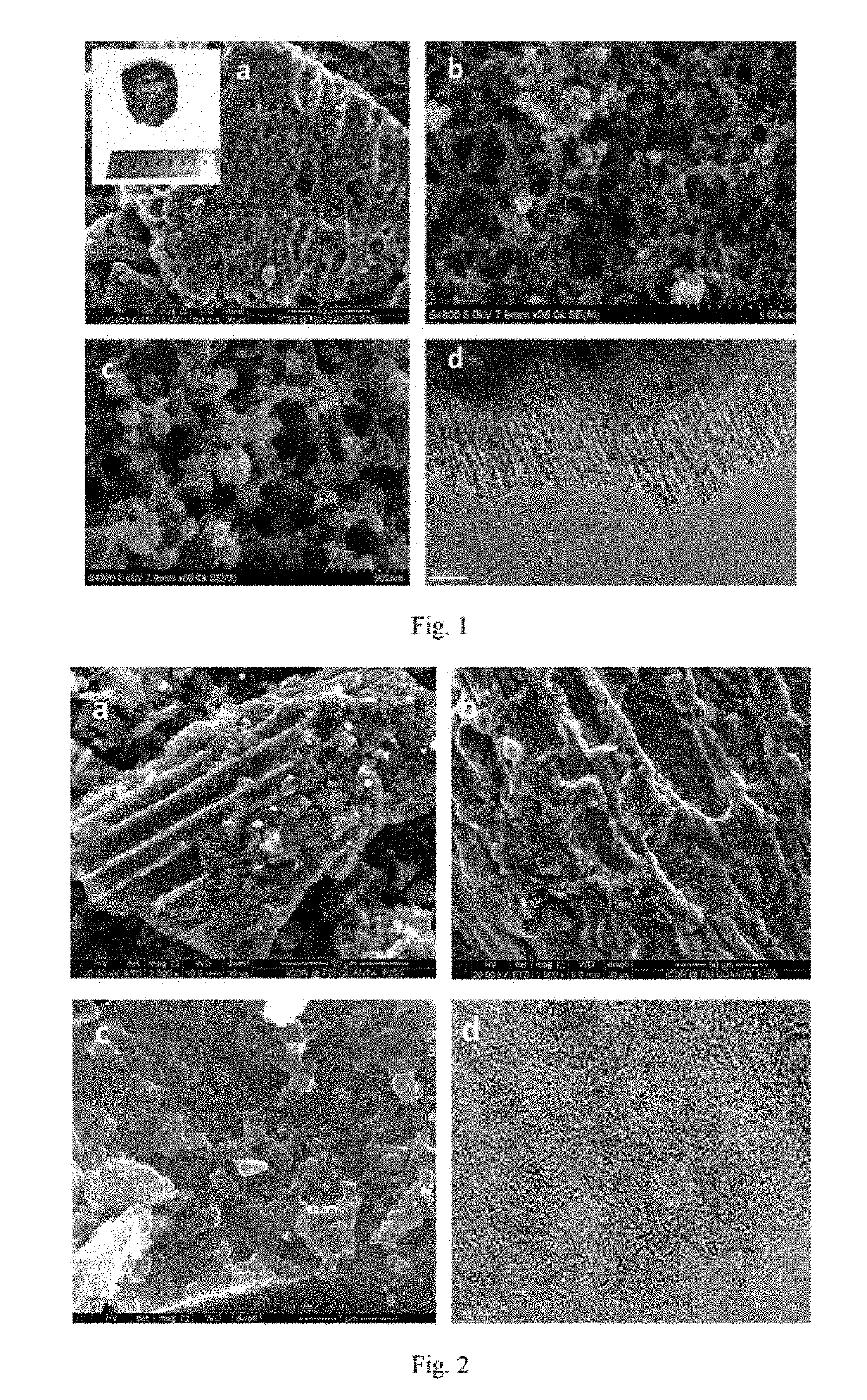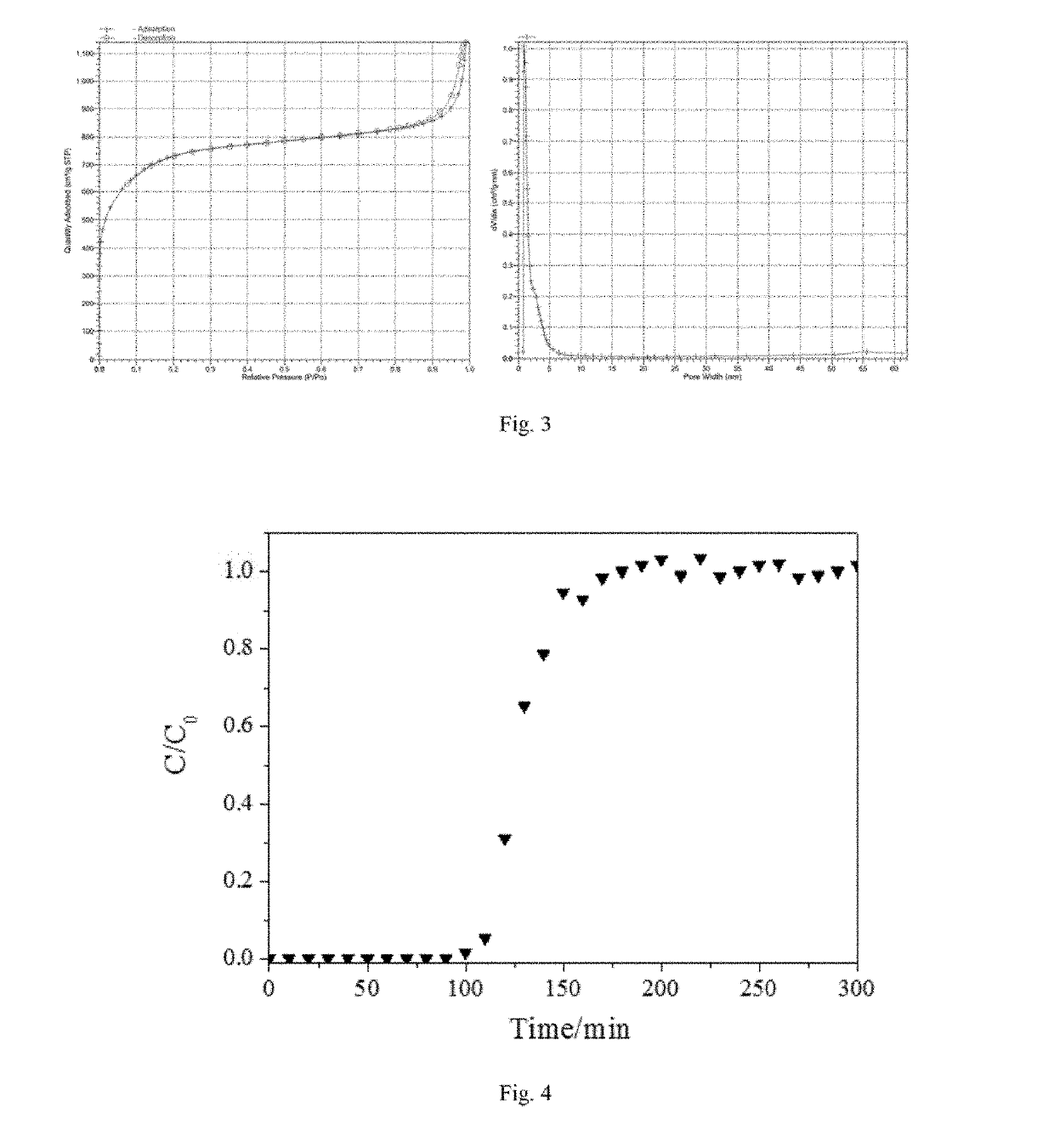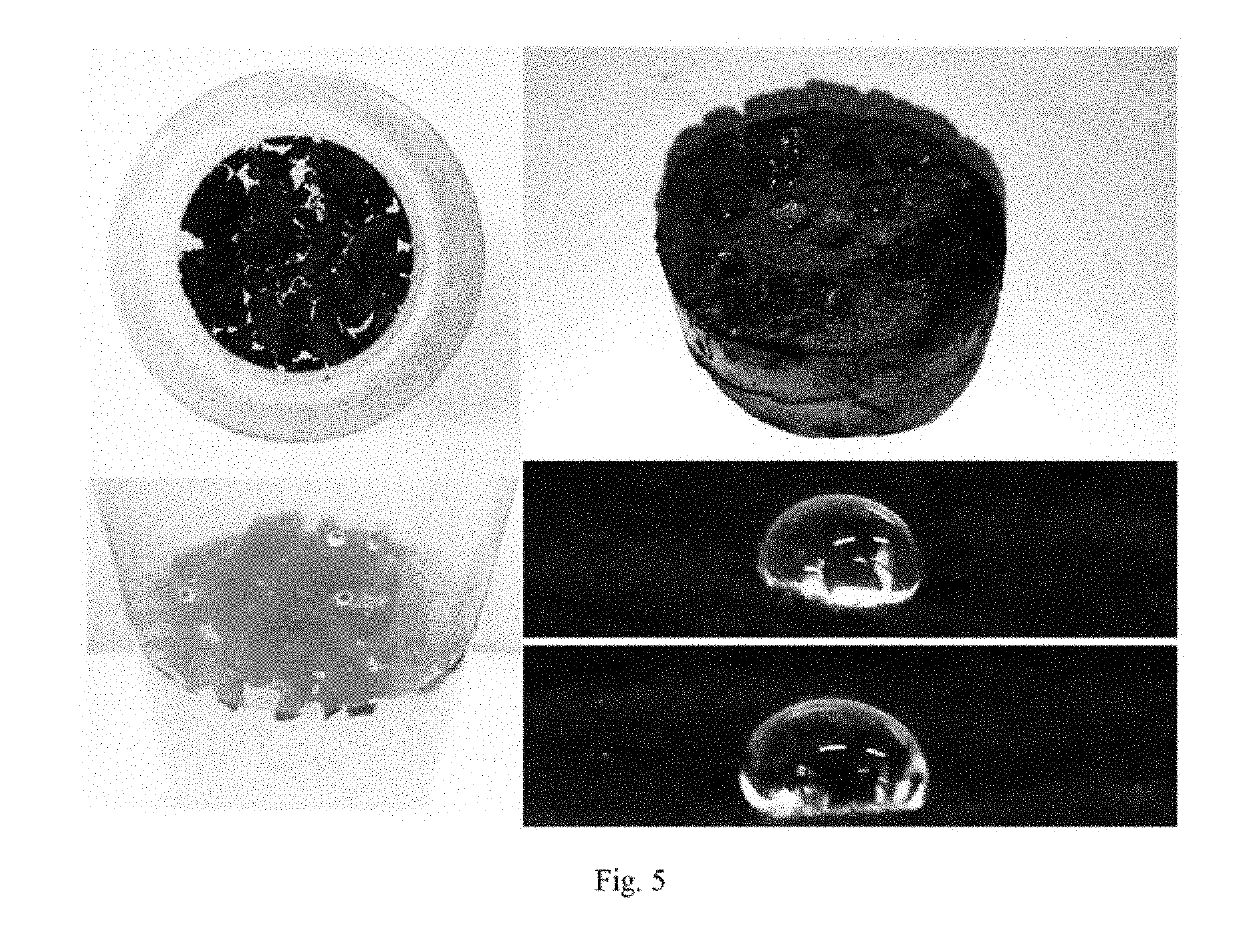Carbon-based porous material and preparation method and use thereof
- Summary
- Abstract
- Description
- Claims
- Application Information
AI Technical Summary
Benefits of technology
Problems solved by technology
Method used
Image
Examples
example i-1
[0116](1) 20 g pyrocatechol is dissolved in 40 ml 37% (mass fraction) formaldehyde solution, 0.9 g glacial acetic acid is added into the solution, and then the solution is stirred for 10 min, till it is in a homogeneous state.
(2) The mixed solution is stirred at 4,500 rpm constant speed for 72 h in 80° C. constant-temperature water bath environment, to obtain an orange gel block.
(3) The gel block is pre-frozen rapidly with liquid nitrogen for 30 s, and then is loaded into a −80° C., 5 Pa vacuum freeze drier and dried for 24 h, to obtain a dry sample.
(4) The dry sample is loaded into a tubular heating furnace, the air in the tube is removed and then nitrogen shielding gas is charged into the tube at 50 sccm charging rate, then the temperature in the reactor is increased at 5° C. / min. heating rate to 750° C. and held at the temperature for 3 h, while continuous nitrogen charging is kept.
(5) The temperature is increased at 5° C. / min. heating rate to 900° C. and held at the temperature ...
example i-2
[0122]150 kg ethyl acetate is mixed with 4 kg silane coupling agent (SYLGARD184 from Dow Corning) and the mixture is stirred to a homogenous state, 100 kg carbon-based porous material obtained in the example I-1 is impregnated in the mixture at 25° C. for 1 h, and then is filtered and dried at 120° C. for 5 h; thus, hydrophobic activated carbon is obtained.
[0123]The SEM and TEM photos of the carbon-based porous material are similar to those in FIG. 1. FIG. 6 demonstrates that the hydrophobicity of the carbon-based porous material is obviously higher than the hydrophobicity of the carbon-based porous material in the example I-1. Other performance parameters are shown in Table 1.
example i-3
[0124](1) 115 g pyrogallol and 170 g formaldehyde are dissolved in 300 ml deionized water, the mixture is mixed intensively, and then 4 g glacial acetic acid is added, and the solution is stirred for 15 min. to obtain a mixed solution.
(2) The mixed solution is stirred at 5,000 rpm constant speed for 24 h in 80° C. constant-temperature water bath environment, to obtain an orange gel block.
(3) The gel block is pre-frozen rapidly with liquid nitrogen for 45 s, and then is loaded into a −80° C., 10 Pa vacuum freeze drier and dried for 24 h, to obtain a dry sample. The dry sample is loaded into a tubular heating furnace, nitrogen is charged at 50 sccm charging rate, the temperature in the tubular heating furnace is increased at 5° C. / min. heating rate to 800° C. and held at the temperature for 3 h under nitrogen shielding, while continuous nitrogen charging is kept.
(4) The nitrogen charging is stopped and then is replaced with carbon dioxide charging at the same charging rate, and, at th...
PUM
| Property | Measurement | Unit |
|---|---|---|
| Temperature | aaaaa | aaaaa |
| Temperature | aaaaa | aaaaa |
| Temperature | aaaaa | aaaaa |
Abstract
Description
Claims
Application Information
 Login to View More
Login to View More - R&D
- Intellectual Property
- Life Sciences
- Materials
- Tech Scout
- Unparalleled Data Quality
- Higher Quality Content
- 60% Fewer Hallucinations
Browse by: Latest US Patents, China's latest patents, Technical Efficacy Thesaurus, Application Domain, Technology Topic, Popular Technical Reports.
© 2025 PatSnap. All rights reserved.Legal|Privacy policy|Modern Slavery Act Transparency Statement|Sitemap|About US| Contact US: help@patsnap.com



